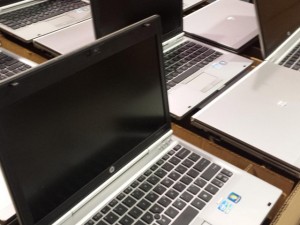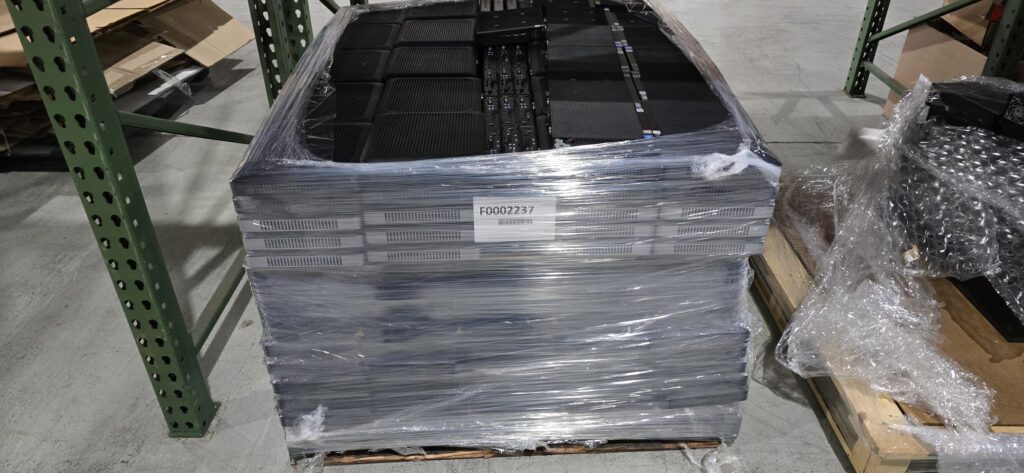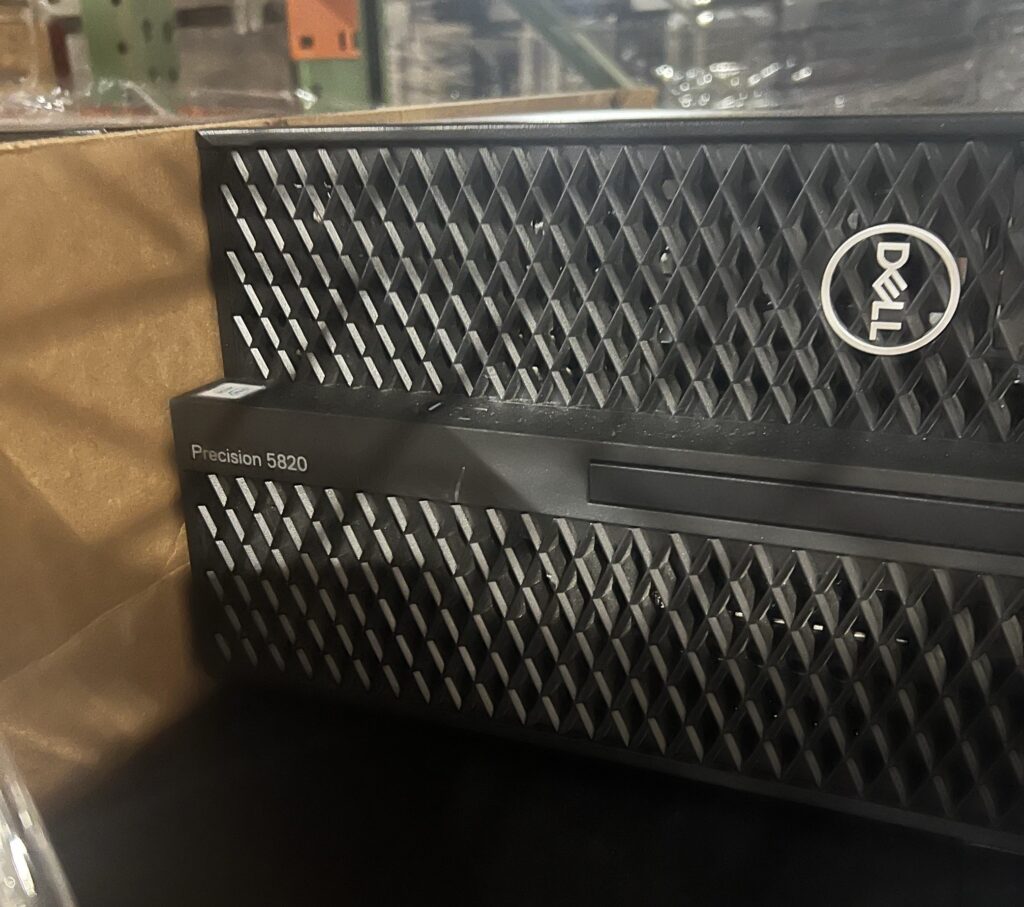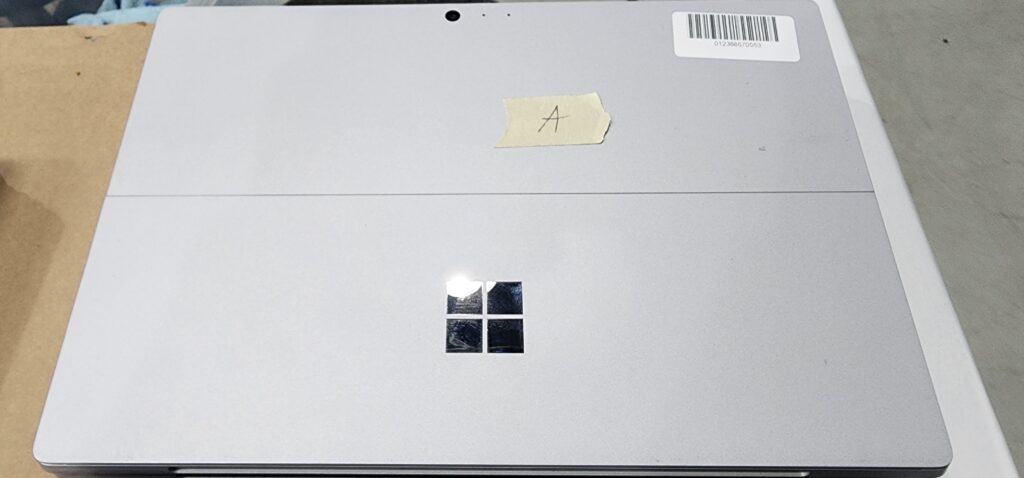As consumers of computer hardware and electronics, Americans demonstrate a hyper obsession with the latest and greatest technology hardware. We research excessively and go to great lengths to spend hard-earned money upgrading our precious devices. From our tablets to our laptops and desktops to our phones (should we still call them “phones” even?), our hunger for the new is insatiable.
And……….So what!? Spending stacks of dollars on replacements to perfectly functioning gadgets that we’ve been convinced are now expired or obsolete (the SAME gadgets that we unwrapped with raw enthusiasm just one year ago) is entirely our own prerogative. Who is to stop us? Even when the replacement device doesn’t meet up to our standards, we wait with eager anticipation for that next one to come out.
The manufacturers can’t release them quickly enough: faster, better and stronger. The cycle continues. Hey, I run as much of a tech fever as the guy next to me in line. If you happen to be one of the few out there in this day and age who has never found yourself replacing a gadget that you knew didn’t need replacement at all, my hat’s off to you: you’re one of a noble and strong few. Unfortunately, it won’t stop the technology mothership from sailing with more pace and fury than ever.
But as we individual consumers of the free market gobble down our next terabyte as an appetizer to the next delicious purchase, here is a dinner conversation we might want to carefully consider: Should our K-12 educational institutions, with vastly dynamic requirements to fulfill and limited budgets to do so, be practicing the same tech overkill habits that we indulge in as individual consumers?
Unnecessary Upgrades Waste Money
With scarce, limited, and often depleting budgets to work with on educational technology, do school districts really need (or more importantly, can they afford) to spend collective millions to replace perfectly capable existing technology just to have newer hardware? Is the motive behind such spending genuinely connected to the enhanced learning capacities of that specific student, grade level or classroom? Or is the driving force the ability to boast state-of-the art equipment and computer labs with lavish technology that is clearly not needed? Most importantly, when it comes time for a technology refresh, what are the effective alternatives to purchasing brand new expensive technology?
In one case, a single Texas school district revealed in an internal audit that over $2.7 million worth of computer equipment purchased in 2007 was either unnecessary or sitting idle after seven years! What’s even more bewildering is that nearly 1 million of those dollars were spent on software that was never used! In addition, hundreds of thousands of dollars more went to maintenance on unused equipment. A quick read through the article uncovers further details and the messy vendor dynamics involved with the controversy, and certainly doesn’t warrant finger pointing at the district alone. However, the example is cited to demonstrate how a lack of responsible tech spending strategy by those authorized to spend taxpayer dollars can waste precious district money.
This district cited above is one extreme example and there are many more to cite. The most important point is this: If the total money wasted annually on both unused and overkill technologies across the country were to be summed, the total would add up to a figure that would leave parents, taxpayers, and educational professionals alike astonished and embarrassed, given the number of alternatives available.
The spectrum of issues up for constant local and national debate when it comes to educational development in our country is large: financial strategies, classroom strategies, underpaid teachers and professionals, socioeconomic imbalances from district to district, and lack of funds for critical and progressive programs. Does it make sense to spend overspend dramatically on unnecessary technology hardware?
It’s important to note, with regard to educational IT professionals, deciding which technologies are appropriate for which classroom or department is a considerably daunting task. Districts have rigid technology requirements laid out along with several levels of local and national rankings to aim for. There are test scores and even social standards to meet. When it’s time to cut a six or seven figure check to a vendor for thousands of new devices for students on behalf of a school district, the game changes. As an educational IT professional, the stakes are high.
When we overspend on educational technology, we’re creating an imaginary link between student performance and technology performance itself. While the United States ranked first in educational spending per student in 2014, we also ranked seventeenth out of forty countries in overall educational performance in 2014. This data supports the notion that emphasis on frequent technology refreshes is not solving critical deficiencies in our educational system. On the contrary, we are essentially throwing money at brand new equipment and expecting it to make test scores go up because of its specs, speed and performance.
Despite our commonly prevailing convictions that new technology is the key to a successful educational system, it is not the solution. I would venture to say that there are many technology professionals trying to drive this same idea home to their clients, but have an impossible time convincing their directors and their district heads of this same reality. Many educational purchasers, directed to ‘spend all the money in the budget’ just to meet certain thresholds, may find it troubling to know that they are in essence wasting excessive amounts of precious district money on new technology.
The Essential Questions
What I see as one of the most essential, yet consistently overlooked details of our educational tech spending strategies, is a simple set of fundamental questions that are too often overlooked:
WHO they are being purchased for (what classroom, grade level, department or school within a district)?
WHAT computers or gadgets are being purchased?
WHEN are they being purchased?
WHERE are they being purchased from?
WHY is technology hardware being purchased?
HOW MUCH is being spent?
Who, what, when, where, why, and how of educational technology as they relate to your technology refresh, all need careful consideration to avoid over-spending precious district budget money that could be utilized more productively and effectively, both within technology scope (in other departments that may truly need more expensive hardware) and beyond (into other important programs, needs or disciplines).
Refurbished Technology Hardware: The Myths and Truths
As a Sales Director for a Refurbished Hardware IT Technology company, I have worked with K-12 IT managers and directors for years. I have witnessed many of the challenges that these professionals face in completing technology purchasing assignments. While many districts have opened up to the benefits (and savings) of purchasing refurbished technology as an alternative to new, there are still far too many districts out there that are blindly opposed to refurbished technology. Many share the same misconceptions about what refurbished technology can do. Here are some of the most common misconceptions regarding refurbished or recertified technology, debunked:

Refurbished Computers are Old and Unreliable
First of all, it’s important to note that most refurbished PCs come from corporations with a percentage coming from other sectors (healthcare, other schools, etc). The average lease of a computer runs two to three years. They are typically the best ‘business class’ brands and models, and were initially elected by that corporation to perform critical business tasks in a competitive environment. Off Lease PCs offer very good value for the money, as they have been replaced and sent for refurbishment long before strictly necessary.
Refurbished Computers are Junk, Flawed, or Broken Goods
This statement couldn’t be further from the truth. Much like an off-lease car has had 2 to 3 years of use, the same holds true for computers. Also, much like an automobile, before that off-lease computer is ever remarketed or resold, it must pass a series of rigorous diagnostic tests, undergo analyses and inspection, and software or firmware updates that even brand new computers have not gone through. During this refurbishing process, any defects, flaws or issues associated with the system, including individual parts and components (motherboards, hard drives, memory, etc.) are identified and fixed.
Following analyses, when and if systems are deemed beyond repair, they are never remarketed, but stripped of working parts and properly recycled by the refurbisher. With warranties extending anywhere from 1 year up to 5 years, it DOES NOT BENEFIT any Microsoft Authorized Refurbisher to resell a system with known flaws, only to have the client return and replace the system later.
Furthermore, when a system is returned to a leasing company that is damaged or even non-functional, it is the lessee that is liable and the lessee that pays for damages, meaning the buck never gets passed on to the second owner of that computer. The second owner also reaps benefits that the lessee was not able to: bugs and failures have been addressed that were not known when the equipment was new.
Refurbished Computers are Not Powerful Enough to Run a Student Workstation
The majority of refurbished computers stream down from corporate business environments with less than 3 years of use on them. The modern corporate environment requires high quality business systems able to complete rigorous computing tasks and often many operations at once.
As such, these are the types of systems we commonly refer to as ‘business class’ machines: steady, powerful processing capabilities, able to perform heavy workloads without hiccups, and built to last. If a machine features enough processing power and capacity to stand the test of a modern executive for 2 to 3 years of unrestricted use, the odds of it keeping up with the average K-12 classroom are pretty great.
Furthermore, a 2 to 3 year old off lease machine will feature real reviews that come from a spectrum of genuine users. If you’re seeking a computer to withstand the elements, aren’t user reviews that span a few years of use more valuable than some unverified marketing hype put out by the manufacturers or affiliates? Would you rather be lured into paying 5 times more for a brand new machine that’s going to lose over 50% of its value in 6 months?
Refurbished Computers Have a Shorter Life Than New Computers
Ever heard the saying that a car doesn’t start ‘breaking in’ until around 25,000 miles? Well, the truth to that statement is actually ten-fold when it comes to refurbished computers.
As mentioned above, a two or three year old refurbished computer has been put to real working performance and hardware tests that a brand new out of the box system quite simply has not. As such, if there were bugs and issues that needed to be fixed following that initial manufacturer roll out, they have since been identified, addressed and ultimately repaired. In the event that there were irresolvable issues, they have been reported, reviewed and recorded. This flawed technology will either never make it to the refurbished market, or the faults will be well known to the public by the time it reaches the market.
This means that a refurbished off-lease PC has gone through a critical ‘breaking in’ period and is essentially as equipped if not more equipped than it once was to perform optimally and efficiently for years to come. In fact, a two to three year old Off Lease Refurbished PC or laptop that is freshly deployed in a K-12 environment can see additional use of 5 years and beyond. The decision to upgrade thereafter is rarely, IF EVER, the result of the system reaching the end of its life (i.e. dying).
Common Sense Technology Purchasing for K-12
Naturally, technology needs to be refreshed as time passes. Operating Systems, Protocols, Firmware and Software changes render this reality inevitable. However, our timelines and requirements for when this is necessary are often myopic. We often exaggerate when system refreshes need to occur and what they need to be replaced with, again resulting in millions if not billions of wasted school budget dollars.
I am not arguing against the existence of new technology or government spending thereon. Technology in our educational institutions and our society is paramount. It is as essential as it is fundamental and it is pointless to argue against technology or the innovation of new technological hardware. We absolutely must, however, design our digital learning experiences, and our budgets, with a full and clear understanding of the options available to us. The options that we may instinctively write off are often, in fact, the best and most economically sensible ones.
Have thoughts or experiences with some of these same or related issues? I’d love to hear your comments.
Written by: Michael Scamardella










Michael,
I liked your article and thought that you do point out a real concern. I have an 8 year old who is doing more and more on computer for school. We purchased an off lease computer from my wife’s company. The employees are offered a chance to buy their older computers. The company refurbishes removing any company information then turns the unit over to the employee. So for $100.00 we have a HP 17″ laptop that is running windows 7 We use Office 365 so that machine has office. So for the next three plus years she should be set for doing school work and some playing. I think as parents and those that are in a position to purchase computers for students really should understand the application of the unit before purchasing. How many complex functions, or how much memory or fast does a CPU have to be for 2nd and 3rd graders? As you mentioned, the computer is just a vehicle to help educate our students and in many cases a refurbished unit will work just as well as a new state of the art unit will. Please let me know when you post again. This was a good read.